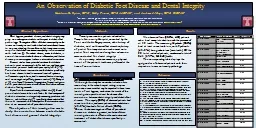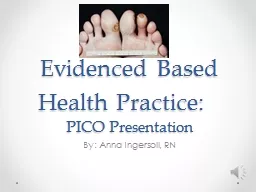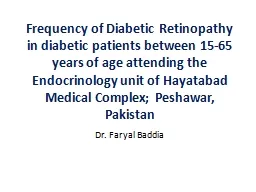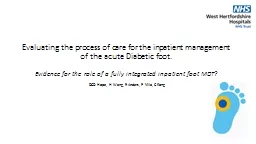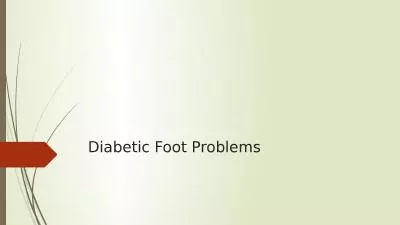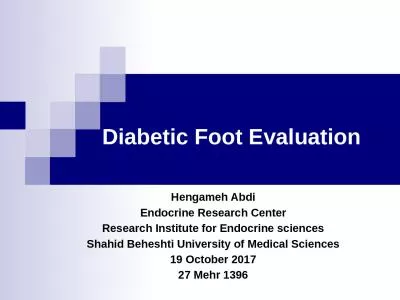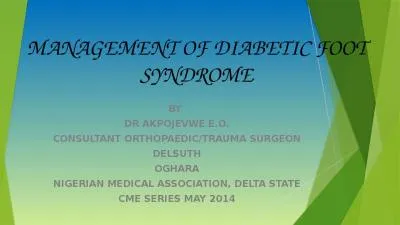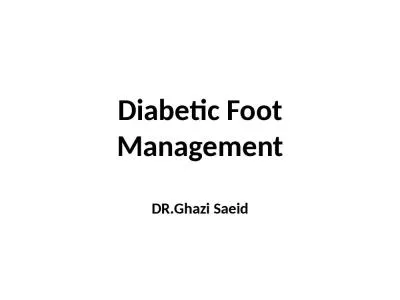PPT-An Observation of Diabetic Foot Disease and Dental Integrity
Author : desiron | Published Date : 2020-06-23
KeriAnne E Spiess DPM a Kelly Pirozzi DPM AACFAS b and Andrew J Meyr DPM FACFAS c a Resident Temple University Hospital Podiatric Surgical Residency
Presentation Embed Code
Download Presentation
Download Presentation The PPT/PDF document "An Observation of Diabetic Foot Disease ..." is the property of its rightful owner. Permission is granted to download and print the materials on this website for personal, non-commercial use only, and to display it on your personal computer provided you do not modify the materials and that you retain all copyright notices contained in the materials. By downloading content from our website, you accept the terms of this agreement.
An Observation of Diabetic Foot Disease and Dental Integrity: Transcript
Download Rules Of Document
"An Observation of Diabetic Foot Disease and Dental Integrity"The content belongs to its owner. You may download and print it for personal use, without modification, and keep all copyright notices. By downloading, you agree to these terms.
Related Documents

